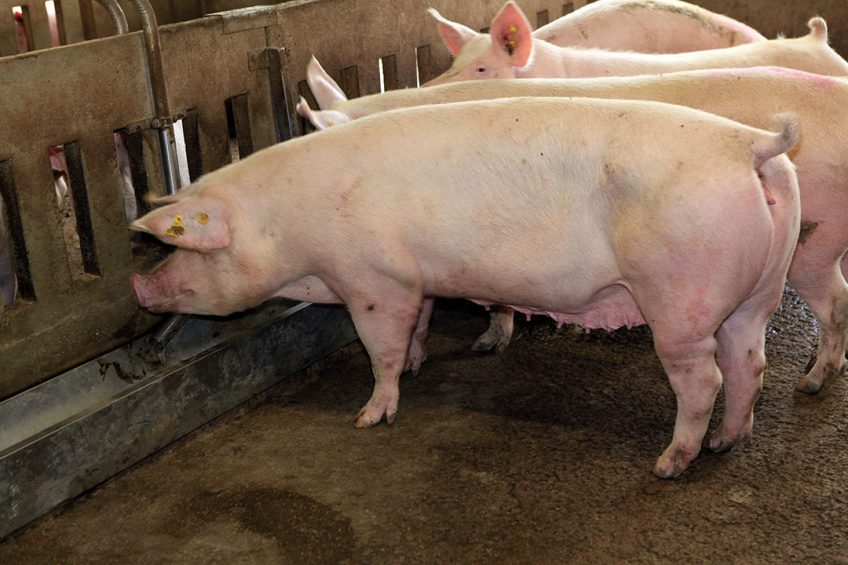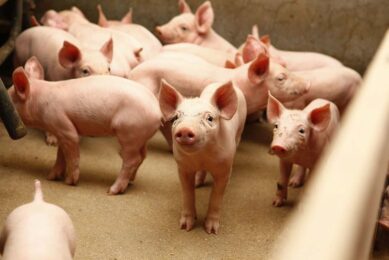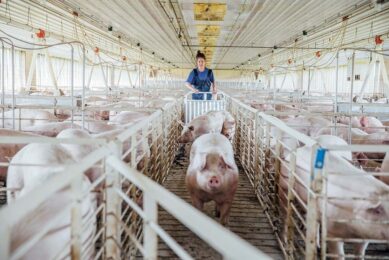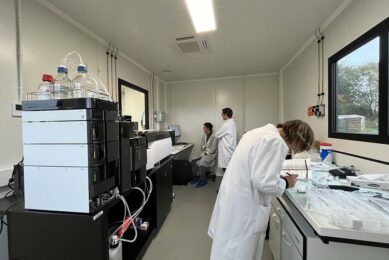Immunity: What can pig farmers do themselves?

Immunity in pig production is not a particularly easy subject. It all starts with producing knowing what they doing and making sure that they are not making things too easy for pathogens, writes pig management John Gadd.
Immunity is firstly defined as ‘security against a particular disease’ and secondly, it is a huge and complicated subject. We all know both of these are truisms, but what is less understood among many pig producers is the considerable part their actions on their own farm can play in mitigating disease.
I would go so far as claiming that what the farmer can do for himself is the very cornerstone of immunity in his case. Vaccines, biosecurity, veterinary supervision, how nutrition can help – or sometimes hinder an adequate immune status, what the breeding companies can do to make things easier… All are important, many are essential – sure!
Take one of these, vaccines, for example. An important weapon in the acquisition of certain essential immunities, but they need to be targeted at the right disease and used at the right time. Even so, if the farmer has prepared the ground/made things easier for them, then they’ll be more effective in both the short term and long term. And cheaper too.
Doing the sums
I have done the sums and published them, see for instance Tables 1 and 2. But vaccines can be overused. I was working extensively in the USA in the 1990s, when their pig producers were assailed by 11 major virus and bacterial diseases. With the vaccine protocol(s) advised by the veterinary authorities, sometimes 6 or more being used at the same time. Such an all-encompassing (what we called a ‘blunderbuss’ approach) seemed then to the pig people to be a likely way out.
Table 1 – Before and after results from using a pig specialist veterinarian to disease profile three farms. Extra vaccination and remodelling costs included (US$ /sow).
| Farm | Before. A | Before. B | Before. C | After. A | After. B | After. |
| Estimated cost of disease per year (US$/sow) | 264 | 186 | 300 | 80 | 96 | 109 |
| Cost of veterinarian | 8 | 3 | 2 | 30 | 27 | 31 |
| Cost of vaccines and medication | 26 | 18 | 30 | 18 | 20 | 21 |
| Cost of remodelling environment (over seven years) | 0 | 0 | 0 | 27 | 45 | 33 |
| Total disease protection costs | 318 | 342 | 342 | 155 | 188 | 194 |
| Difference (improvement, %) | 0 | 0 | 0 | 51 | 9 | 43 |
The result was nearly a national pig disaster for them, the hoped-for protective immune systems were overloaded and disease levels became rampant, not controlled. I happened to be there to help the local ‘GP’ vets clear up the mess – the answer was to go back to basic immune encouragement actions on the farm, not necessarily rely on the factory. Then things started to improve in the 2000s.
So this and the following article suggest the main things the pig producer can do before the helpful ancillary actions are needed to assist a good protective state of immunity. Some cost a bit more money, others nothing at all apart from vigilance and effort.
Read more expert opinions on pig health, housing, nutrition or welfare
Golden rules of establishing an effective immune status
On any farm, of any size and location.
1. Get a vet to disease-profile your herd. He can only do this by regular attendance. Things change; nature does this to protect itself, so regular check-tests are needed to keep pace with what disease throws at you. In this way you are one step ahead of nature. And can take the right countermeasures in good time. Does it pay? Yes, see Table 1.
2. Never, never overstock! Overstocking is an open invitation for any hostile micro-organisms to enter your herd and do their worst, as immunity is compromised. This is where breeding firms can help. Only a few docile strains with the right genes can cope, but most will not. With housing costs accelerating it is a major temptation to crowd more in. It just doesn’t pay (Table 2). Savings in lower housing costs from 15% overstocking were £0.64/pig (€ 0.72). Net gain therefore from not overstocking was £3.05/pig (€ 3.45).
Table 2 – Likely costs incurred by overstocking a nursery and a finishing house by 15% (about 2 more pigs in a pen designed to take 12). £1 = €1.13.
| Pigs, 6-35 kg. Correct density | Pigs, 6-35 kg +15% | Pigs, 36-102 kg. Correct density | Pigs, 36-102 kg +15% | Total | |
| Daily gain (g) | 518 | 480 | 844 | 841 | |
| FCR | 2.02 | 2.12 | 2.42 | 2.63 | |
| Total feed cost (£) | 14.06 | 14.76 | 27.06 | 29.41 | |
| Extra feed cost/pig (£) | 1.34 | 2.35 | 3.69 |
Join 18,000+ subscribers
Subscribe to our newsletter to stay updated about all the need-to-know content in the pigsector, three times a week. Beheer
Beheer










 WP Admin
WP Admin  Bewerk bericht
Bewerk bericht